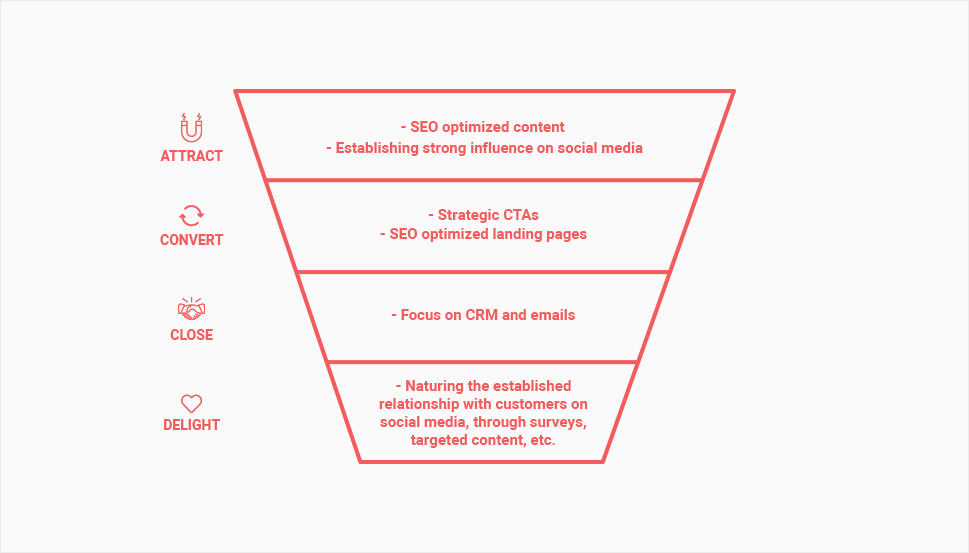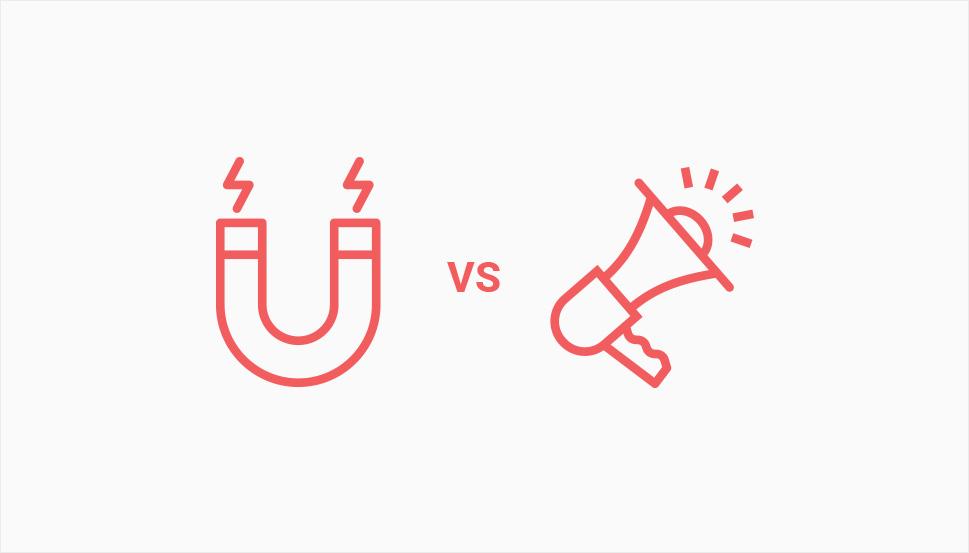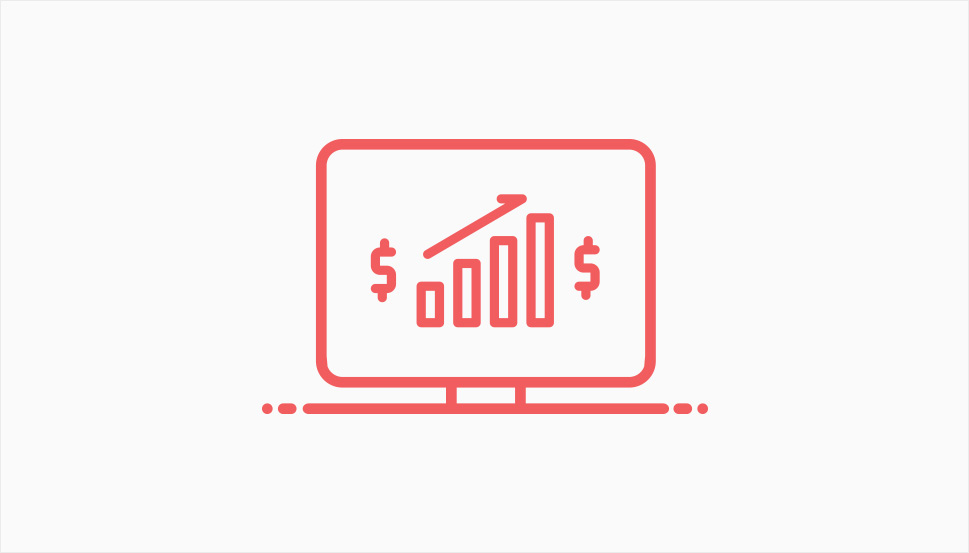Inbound vs Outbound Marketing: What’s the Difference?

Although often represented as two opposing approaches, inbound and outbound marketing are indeed complementary to one another. There is no reason to choose between the two when usually the best course of action is to implement what you find the most useful from both of these marketing approaches. To do that, you need a deep understanding of what both of them are, what makes them different, and how and when they are used. That’s exactly what we’ll be talking about in this article.
Stay tuned to read more about:

Outbound marketing is often considered as the traditional type of marketing where the majority of effort is invested into reaching out to customers and directly encouraging them to purchase the products or service. This type of marketing focuses more on the product/service and typically shapes communication in such a way as to attract as many potential consumers as possible. It is not specific, nor refined. It is meant for everyone and therefore its primary goal is to raise attention.
Outbound marketing efforts are sometimes compared to looking for a needle in a haystack, as the tools this type of marketing uses simply can not target specific consumers. The logic that supports outbound marketing campaigns essentially boils down to one premise – the wider the audience you reach, the greater are the chances for profit. The type of media outbound marketing commonly uses includes but does not end with:
-
billboards
-
TV commercials
-
PPC ads
-
YouTube ads
-
radio commercials
-
cold-calling
-
direct mails
The best way to understand how outbound marketing works is through examples. Imagine you are driving back home on a cold winter evening and you see an attractive billboard about summer vacations on the way. It is winter and you haven’t yet considered your options for the summer, so you just disregard the billboard, while the attractive images of the summer destinations linger somewhere back in your mind. A month later you see the same advertisement on TV, for a brief moment you long for a summer vacation that is advertised but it is still winter and you still don’t have any precise plans for the summer. And then, three months later, you receive a first-minute offer for the same vacation in your mailbox – now it is not that early to think about the summer vacation and you could book an arrangement. The ads that you were exposed to didn’t tell you directly what to do or what kind of destination to book this summer, instead, they made you think and plan your summer vacation, and the offer was at your disposal just when you were finally ready to do something about it. That’s basically how outbound marketing works.
Nowadays, when we have so many precise and sophisticated marketing tools, so much experience and so many options, outbound marketing often seems futile and outdated. But, that’s simply not true. Before we explain why that’s not true, let’s first explain what inbound marketing is.

Inbound marketing doesn’t waste time on attracting the audience that is not already interested in the product/service, but instead aims to attract the best prospects, those who are already actively searching for the type of product/service that you offer. The type of message that inbound marketing campaigns send is not general but highly specific. We could say that inbound marketing tends to offer targeted content that is useful to the recipient, rather than to drive attention at all costs.
As you can guess, there is nothing short-term about inbound marketing. It is all about creating content that will answer the needs of potential consumers as precisely as possible. The type of content that is commonly used includes:
-
blog posts
-
video content
-
downloadable content (e-books, video lessons, etc.)
-
webinars
-
tutorials
-
tip sheets
-
guides etc.
-
podcasts
-
newsletters
Inbound marketing implies having a high-quality content strategy in place before making any moves. It demands a lot of market research as there is no great content without knowing your target audience’s needs and traits. An inbound marketing campaign is usually split into stages to cover different needs throughout the whole process of converting a user into a consumer. Generally, four stages are recognized, and four types of content accordingly:

Inbound marketing attracts users by offering useful and relevant content that helps the user solve a problem or make a decision. It is not as disruptive as outbound marketing since it targets the users who are already looking for the type of content that is offered. It relies on establishing a trustful relationship with customers by offering relevant content that will eventually lead to conversion/purchase.
In reality, it works like this – you are thinking about dyeing your hair by yourself, you have never done it before so you start exploring how to dye your hair by yourself on the internet. You find a surprisingly useful article about this topic, and since it was really helpful you start exploring the solutions suggested in it. You also find more useful info on the same website and after a bit of research, you decide to go for the products suggested in the article. No one pushed you to buy or click anything, you made your decision based on the trust the article raised in you. This is the scenario every inbound marketing campaign is hoping for.

Besides the different techniques and strategies, what is the substantial difference between inbound and outbound marketing? The one crucial difference is that inbound marketing lets the consumer come to you while outbound marketing aims at interacting with the consumers whether they are interested in your offer or not. While inbound marketing focuses on building a trustful, long-term relationship with customers, outbound marketing focuses on attention-grabbing messages to attract as wide an audience as possible. Outbound marketing is often considered a more invasive approach, though it doesn’t necessarily need to be so.
The fact is, both inbound and outbound marketing can bring you great results depending on how you use them. It is not a battle of which one to choose over the other, but more about how to allocate your budget and efforts to make the best out of both approaches. A thorough market research of your niche and your target audience will provide you with the best guidance for setting a sound marketing strategy. Although inbound marketing’s popularity is on the rise, maybe for your specific case and for your business at the moment it would be more profitable to invest in a brand awareness campaign than to immediately work on increasing conversions.
Therefore, we’ll suggest a few cases when it is better to use outbound and when to go for inbound marketing methodology.
Inbound marketing usually implies you have to wait to be found, and that can be quite limiting in many aspects, especially if you are a new brand on the market. Therefore at least some techniques used in outbound marketing are often necessary to achieve the desired results. So, if your concern revolves around growing your audience reach, raising brand awareness, or getting a bit faster results, smart outbound marketing campaigns can be an excellent solution. Positioning your brand, achieving brand recognition, and establishing a new brand indeed requires a bit of shouting from the rooftops, so to speak, and that’s where outbound marketing can hardly fail to deliver. Outbound marketing strategies are also a great way to invite the audience to discover your website and your content, and then you can proceed with more narrow targeting of the consumers with an inbound marketing strategy.
Inbound marketing is very subtle and indirect. The logic behind any inbound marketing campaign is that the increased consumers’ engagement with the brand will result in higher conversion rates. Since content marketing focuses on offering quality content that consumers will find useful and interesting so that they naturally want to engage, it plays a very important role in an inbound marketing campaign too. SEO and similar methods are used to help consumers discover the brand, and any type of direct sales message is typically avoided. Bearing all this in mind, inbound marketing is always very useful, especially when you want to have a competitive advantage over a brand that offers products of similar quality and price range. The quality of your content and user experience that you provide can make all the difference in the world however common your products/services may be. Investing in a quality content strategy is almost mandatory if you want to achieve any serious success in doing business online. Inbound marketing takes a lot of market research, planning, attunement to your target audience’s needs to reap the results but it undoubtedly pays off.
Both outbound and inbound marketing have an impact on brand awareness but in a completely different manner. While outbound marketing helps you get recognized generally in a sense “oh, that’s the company that offers luxury travel arrangements,” inbound marketing helps you gain and preserve credibility so that the consumer thinks “oh, these guys know what they are doing.”
Both methodologies can result in increased sales but with inbound marketing, you get more measurable results and you always know what type of effort paid off the most. With outbound marketing, you can never know exactly what worked and what didn’t. Even when you manage to attract a lot of attention and get perceived as a brand with cool commercials it still doesn’t have to do anything with sales. That’s because outbound marketing tends to entertain the audience while inbound marketing tends to engage with the audience.
Inbound marketing requires time to reap the results, but once it starts to pay off it gets a lot easier to build on the efforts and continue enjoying the rewards. Outbound marketing is a short-term solution, almost a quick fix that doesn’t really serve its point unless it is supported with a solid inbound marketing strategy.
It can be tricky to avoid being intrusive with outbound marketing – no one enjoys being interrupted while watching a youtube video or favorite tv show. On the other hand, it can take time to get people to know about your brand simply by stuffing your site with great content. The fact is that combining the elements of both approaches is what will be effective in most cases, so it’s best to mix and match until you find a combo that works best for you.

Marketing budgets are often the pain point of startups and new companies, so looking for the most cost-effective solution makes all the sense in the world.
When it comes to ROI and bootstrapped budget, the stats are definitely in favor of inbound marketing. Based on the facts provided by the DemandMetric inbound marketing costs 62% less per lead. The mere fact that inbound marketing is customer-driven, meaning the customer is coming to you, already saves you funds that you would otherwise have to invest into reaching out to them.

Consumer behavior is constantly changing and the most effective marketing approach is the one that takes these changes into account. Nowadays, you can see a consumer standing in line in an offline store while making an online purchase at the same time, so focusing just on one type of marketing simply won’t be as effective.
Omnichannel marketing, as its name suggests, is a holistic approach that aims to ensure the consistency of brand message through all the most effective channels, and by doing so it strengthens both the inbound and outbound marketing efforts. This methodology is a synthesis of these two approaches and implies establishing your brand presence across multiple online and offline channels while ensuring a bespoke customer experience.
Unlike cross-channel or multichannel marketing, omnichannel marketing focuses on using a variety of different channels cohesively and in harmony with each other. None of the channels is isolated like in cross-channel marketing, nor it is limited to only a few selected channels like in a multichannel strategy.
In Conclusion
Instead of comparing the pros and cons of outbound and inbound marketing, maybe it is better to put your business needs and your budget first and act accordingly. Without recognizing the phase your business is in at the moment, without knowing who your consumers are, what they need, how they typically behave online and offline, every marketing campaign is just a random hit in the dark that is very likely to miss the target. But, if you take time to get to know your consumers thoroughly, it will be easy to choose the most effective marketing channels, methodology, and approach. And, what’s also certain is that whatever the approach you go for, you are surely going to need to produce quality content for your website if you want to stay on top of the game.



